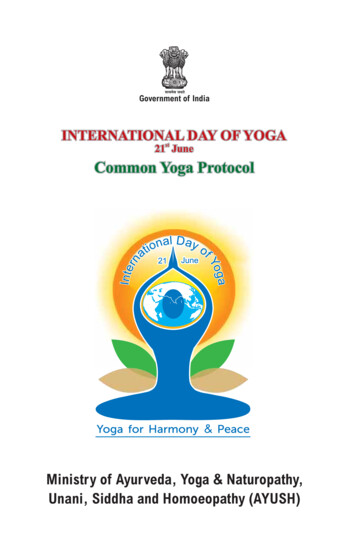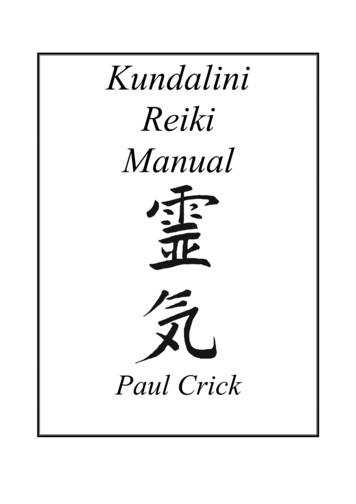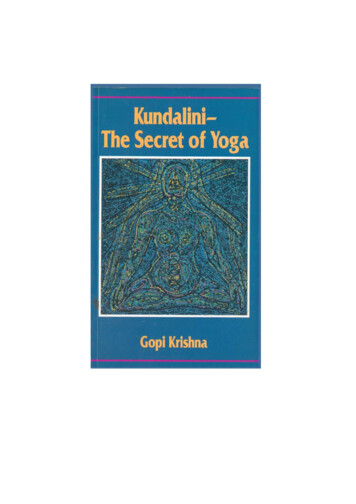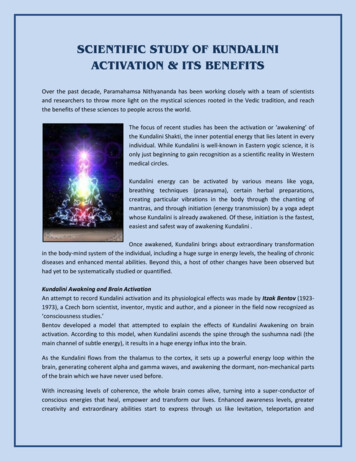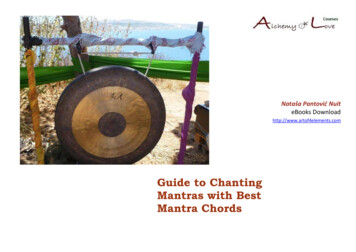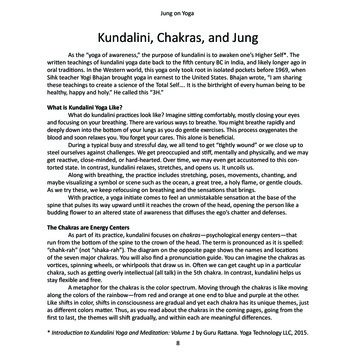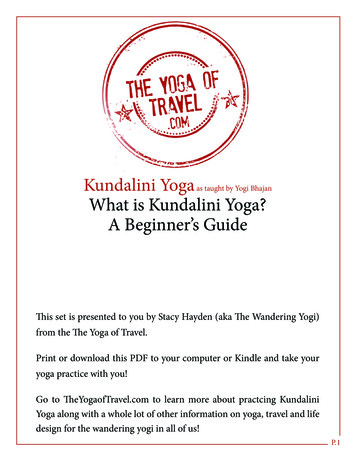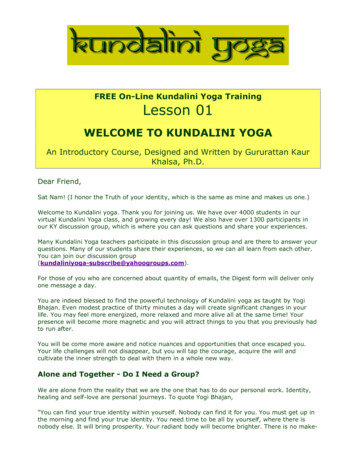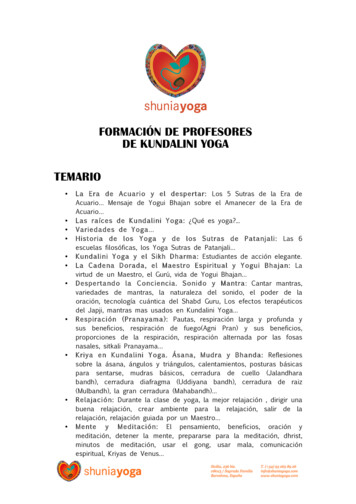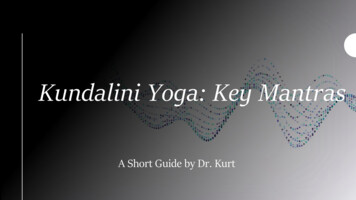
Transcription
Kundalini Yoga: Key MantrasA Short Guide by Dr. Kurt
Kundalini Yoga:Key Mantras In Kundalini Yoga, we chant specific mantras at thebeginning and end of each class. These mantras helpus ground in the moment—both within ourselves andwithin the class environment. Each mantra is simple and easy to learn. KundaliniYoga encourages a “fake it till you make it” approachso please feel free to listen, hum, whisper, etc. as yousee fit. You can also choose to opt out and remainsilent if you know it’s just not your thing. It’s worth noting that Kundalini Yoga is a wellnesspractice that some people associate with spirituality,meaning a source of personal growth. It is not areligion, meaning the worship of God(s).
Kundalini Yoga:Key MantrasTuning In to Our IntuitionOne of the first things we do at the beginning of eachKundalini Yoga class is tune in. This is a tranquil andexpressive moment that helps us set aside our “to do” listand connect with our intuition—that subtle, heart-centeredplace of knowing.When we tune in, we sit up straight, press our palmstogether, and rest our thumbs against our sternums. Thenwe chant the following mantra three times, each time as along exhale:Ong Namo Guru Dayv NamoThis mantra refers to connecting with your intuition,meaning heart-centered wisdom.
Kundalini Yoga:Key MantrasConcluding ClassAt the end of each Kundalini Yoga class, we usually chantor recite the “Long Time Sun” to honor ourselves and eachother for the practice we just completed. We chant orrecite the following words with our hands resting on ourhearts, once again emphasizing the role of love andintuition in leading our growth.May the Long Time Sun Shine Upon You,All Love Surround You,And the Pure Light Within You,Guide Your Way On.Fun Fact: The “Long Time Sun” is part of a folk song writtenby a Scottish band in the late 1960s, around the same timethat Kundalini Yoga started to become popular in the U.S.This may remind us that yoga is not necessarily a timeless,ancient tradition but one that mixes, matches, and adaptsto the times.
Kundalini Yoga:Key MantrasThe Kundalini GreetingWhile many yoga practices use the term namaste topersonally acknowledge others, in Kundalini Yoga we usethe following term:Sat NaamThe meaning of Sat Naam varies by context. When used asa mantra in class, it is a way of attuning to our intuition.When used to acknowledge others it means, my inner selfrecognizes and respects your inner self.At the end of class, Sat Naam is usually recited three timesafter the “Long Time Sun,” each time as a long exhale.
Kundalini Yoga: Key Mantras The Kundalini Greeting While many yoga practices use the term namaste to personally acknowledge others, in Kundalini Yoga we use the following term: Sat Naam The meaning of Sat Naam varies by context. When used as a mantra in class, it is a way of attuning to our intuition. When used to acknowledge others it means .

